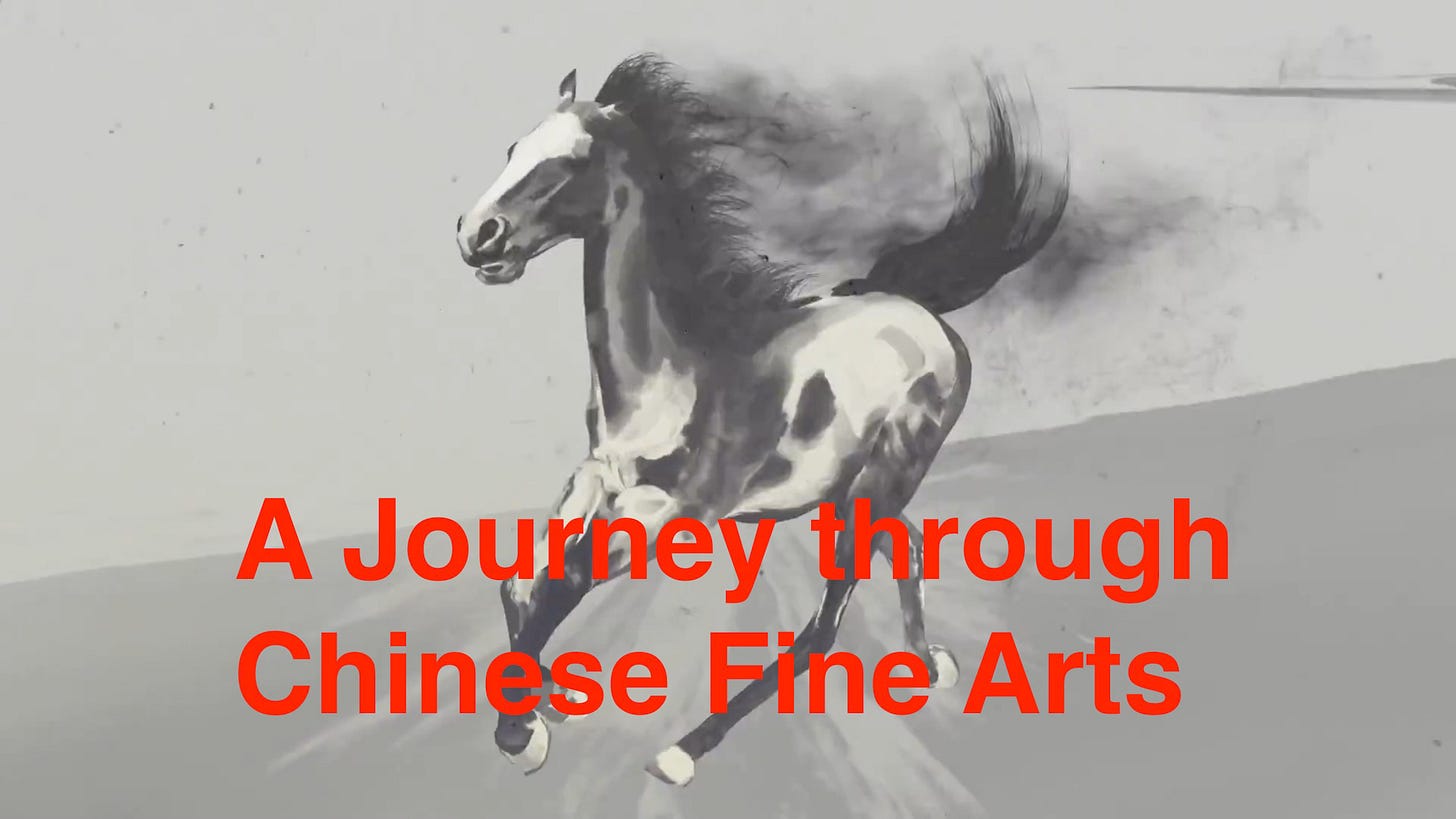A Journey Through Chinese Fine Arts
History, Periods, Materials, and Masterpieces
Source: https://chat.deepseek.com (prompt: write a 500 word essay on the development of ink drawing in China and emphasis the importance of the horse and especially at scale or in Tang statuary. Also add mention of Shang and sites in Sichuan)
The development of ink drawing in China is a profound reflection of the country's rich cultural and artistic heritage, spanning thousands of years. Ink drawing, or *shuimohua*, emerged as a dominant artistic medium during the Tang Dynasty (618–907 CE), though its roots can be traced back to earlier periods, including the Shang Dynasty (c. 1600–1046 BCE). This art form, characterized by its use of brush, ink, and paper or silk, became a vehicle for expressing philosophical ideas, natural beauty, and the dynamism of life. Among its many subjects, the horse holds a special place, symbolizing power, freedom, and spiritual vitality. The depiction of horses in ink drawing and Tang statuary, often at a monumental scale, exemplifies the artistic and cultural significance of this subject.
The origins of Chinese ink drawing can be linked to the Shang Dynasty, where early forms of calligraphy and symbolic art were inscribed on oracle bones and bronze vessels. These early works laid the groundwork for the expressive potential of brush and ink. By the Tang Dynasty, ink drawing had matured into a sophisticated art form, influenced by Daoist and Buddhist philosophies that emphasized harmony with nature and the fluidity of life. Artists such as Wu Daozi and Han Gan elevated ink drawing to new heights, capturing the essence of their subjects with minimal yet powerful strokes. Han Gan, in particular, was renowned for his depictions of horses, which were celebrated for their lifelike energy and movement. His works, such as *Night-Shining White*, exemplify the Tang Dynasty's fascination with the horse as a symbol of imperial power and cosmic vitality.
The horse was not only a central subject in ink drawing but also a prominent motif in Tang statuary. Tang Dynasty pottery figurines, often created as tomb goods, frequently depicted horses at a large scale, reflecting their importance in both daily life and the afterlife. These sculptures, known for their realism and dynamism, captured the horse's muscular form and spirited demeanor. The scale of these statues, sometimes life-sized, underscored the horse's symbolic role as a bridge between the earthly and spiritual realms. The Tang elite, who prized horses for their role in warfare, trade, and diplomacy, commissioned such works to demonstrate their status and ensure their prosperity in the afterlife.
In addition to the Tang Dynasty's artistic achievements, archaeological discoveries in Sichuan Province have shed light on earlier depictions of horses and other animals. Sites such as Sanxingdui, dating back to the Shang and Zhou periods, reveal a rich tradition of animal symbolism in Chinese art. While these artifacts are primarily bronze and jade rather than ink drawings, they demonstrate the enduring cultural significance of animals, including horses, in Chinese artistic expression.
In conclusion, the development of ink drawing in China, particularly during the Tang Dynasty, represents a pinnacle of artistic achievement. The horse, as a subject, embodies the vitality and spirit of the era, whether rendered in ink on silk or sculpted at a monumental scale. From the Shang Dynasty's symbolic art to the grandeur of Tang statuary, the horse has remained a powerful motif, reflecting China's deep connection to nature, spirituality, and artistic innovation.














Share this post